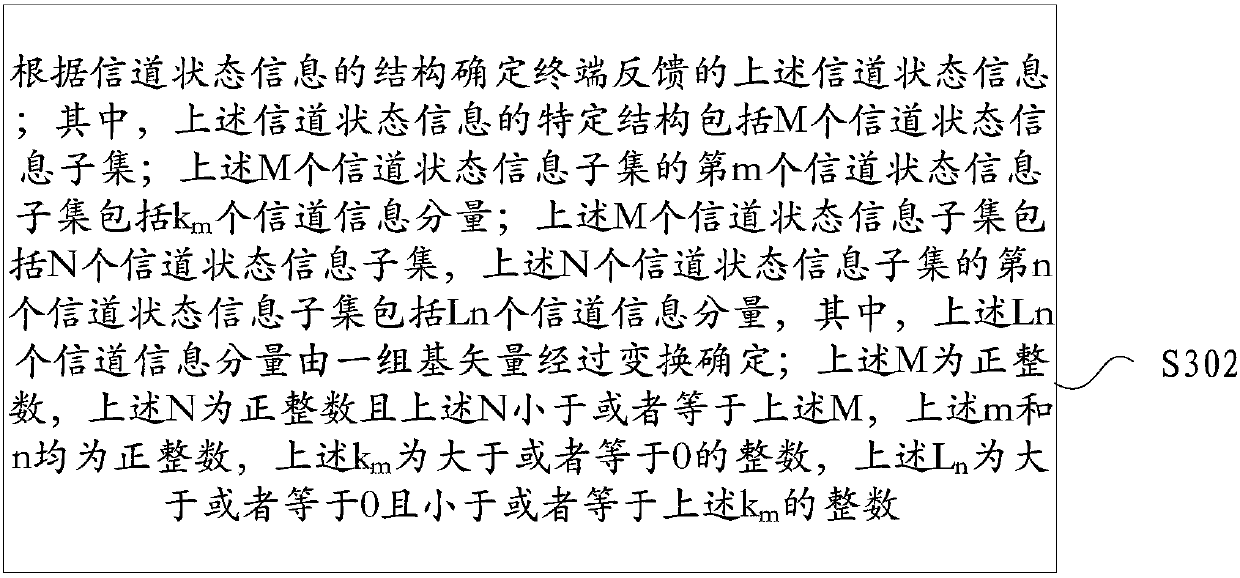Feedback and determination methods and devices for channel state information
A technology of channel state information and channel information, applied in the field of communication, can solve problems such as inability to guarantee inter-layer orthogonality, inability to provide multi-panel antenna correlation feedback, etc.
- Summary
- Abstract
- Description
- Claims
- Application Information
AI Technical Summary
Problems solved by technology
Method used
Image
Examples
specific Embodiment 1
[0177] This specific embodiment provides a specific implementation manner of channel information quantization feedback under multiple panels. In 5G technology, Figure 4 is a schematic diagram of the multi-panel large-scale antenna array in this specific embodiment, as Figure 4 As shown, the way to configure a multi-panel large-scale antenna array at the base station has been extensively studied. exist Figure 4 , the entire planar antenna array contains M g N g panels, and each panel contains MN ports. In each panel, the antenna port spacing is uniformly distributed, and the distance between adjacent antenna panels is also uniformly distributed, while the distance between adjacent ports of adjacent antenna panels is not necessarily equal to the antenna spacing in the panel. Therefore, the correlation of antennas between panels is not necessarily equivalent to the correlation of antennas within a panel. Traditionally, one-dimensional or two-dimensional discrete Fourier T...
specific Embodiment 2
[0188] This specific embodiment provides a way of quantizing channel state information under multiple panels. In the specific embodiment 1, the beams of different panels are obtained by angularly rotating the beams. In addition to the angular rotation, the beams can also be changed by phase transformation and amplitude expansion. For example, the precoding of the kth panel in polarization direction i can be expressed as:
[0189]
[0190] Among them, the matrix P k,i is a diagonal matrix, which means to perform phase transformation and amplitude expansion on the beam on panel k, and its form is as follows:
[0191]
[0192] Indicates the amplitude expansion of the beam, Indicates the phase transformation of the beam. In this way, the final precoding satisfies the following structure:
[0193]
[0194] Using the above precoding matrix, the spatial correlation in CSI reported by different panels can also be optimized. On the other hand, through W 1 , W 2 and W...
specific Embodiment 3
[0195] This specific embodiment provides a specific implementation manner of channel information quantization under multiple panels. In LTE Rel-13, two feedback methods are introduced, Class A feedback based on NP CSI-RS and Class B feedback based on BF CSI-RS. Class A uses port-combining precoding, while Class B uses port-selective precoding. Embodiment 1 and Embodiment 2 can be regarded as using Class A feedback to obtain precoding information. This embodiment provides a method for obtaining CSI using Class B port selection precoding under multiple panels. For each panel, the base station converts the antenna port into B virtualized CSI-RS ports through BFCSI-RS, and each port corresponds to a beam. When the terminal feeds back, the beam selection information in the panel and the inter-panel correlation information are fed back. Feedback to CSI. For LTE, the new Class B codebook of Rel-13 can realize this function to a certain extent. However, the port group division of t...
PUM
 Login to View More
Login to View More Abstract
Description
Claims
Application Information
 Login to View More
Login to View More - R&D
- Intellectual Property
- Life Sciences
- Materials
- Tech Scout
- Unparalleled Data Quality
- Higher Quality Content
- 60% Fewer Hallucinations
Browse by: Latest US Patents, China's latest patents, Technical Efficacy Thesaurus, Application Domain, Technology Topic, Popular Technical Reports.
© 2025 PatSnap. All rights reserved.Legal|Privacy policy|Modern Slavery Act Transparency Statement|Sitemap|About US| Contact US: help@patsnap.com



